A Detailed Marketplace Comparison: Selling on Walmart vs. Amazon

Keep the good stuff coming
Subscribe to our blog newsletter and get monthly content that helps you manage product data smarter.
No spam. Just real value.
In 2021, records showed that Amazon was by far the most popular online marketplace, with the biggest customer base across the globe. A forecast from eMarketer revealed that Amazon’s US marketplace sales grew by more than 16% to reach about $220.39 billion by the time 2021 ended. But what about Walmart?
This channel is emerging as the top contender for the number two spot as US customers are increasingly shopping on the Walmart marketplace. The well-known brick-and-mortar shut down at the peak of the pandemic but escalated Walmart’s US ecommerce growth by more than 76.0% shortly after. This means the company generated +/- $53.30 billion in sales and captured 6.7% of the total online sales.
That’s damn impressive!
In addition, Walmart revealed plans to invest in its fulfillment capacity, supply chain, automation, and technology. The message is clear here, Walmart is saying that it’s ready to compete with Amazon. For online sellers, this presents a wealth of opportunities to take into consideration. But it also adds to the pressure of choosing the right platform to sell their products. Which is the best one for your business: Walmart or Amazon? Stay with us as we make a comparison of these platforms below to help you determine which aligns more with your offerings.

Understanding the Walmart vs. Amazon shopper
Both platforms attract a wide range of shoppers, who are almost identical. But according to Business Insider, the difference is that the average American Walmart shopper has an annual household income of just over $76,000, while the average American Amazon customer has an annual household income of $84,000.
It’s also important to note that Walmart’s in-store customers are not the same as the customers who shop via its marketplace. In a webinar held in 2020, Walmart suggested that over a third of its online shoppers are between the ages of 23 and 38, while in-store shoppers are 46-year-olds. When it comes to the marketplace data, Statista revealed that Walmart.com surpassed 410 million visits per month, as of June 2021. In late 2020, Forbes reported that Walmart+, the company’s benefit-packed subscription service, gained the interest of between 7.4 million and 8.2 million Americans post-launch in September. However, if we look at Amazon, for instance, the marketplace recorded approximately 2.45 billion monthly visits to Amazon.com in the US. To add to that, Amazon has about 112 million American Prime subscribers, who spend an impressive average of $1,400 per year.
What is common about these customers is that they shop on their smartphones, tablets, or laptops. But their reasons for shopping slightly differ. Americans shop at Walmart because it offers them low prices for good quality products.
Customers also prefer Walmart because they can buy online and pick it up in a nearby store (BIPOC), or by the curbside option. Meanwhile, Amazon customers are not concerned about prices, they care more about the fast and free shipping benefit that Amazon provides them. Other reasons include extensive product selection, easy returns process, shopping experience, and much more!
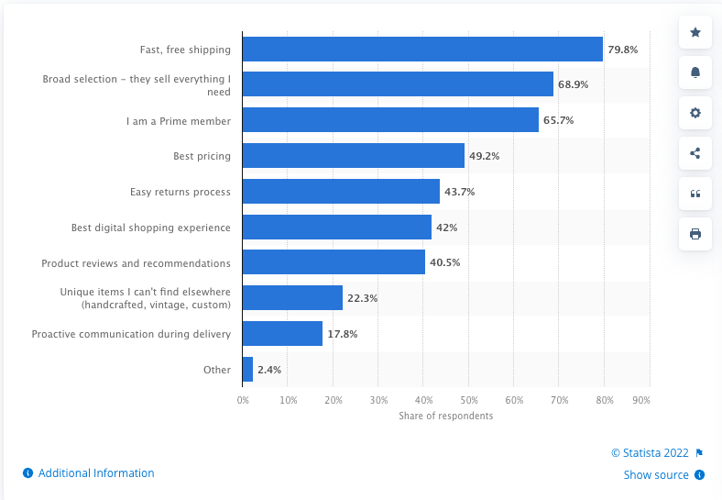
Now that you know more about the customers and their shopping behavior around these marketplace platforms, let’s get to which products sellers can sell via these marketplaces, the benefits of each platform, and how to get started.
What to sell at Walmart vs. Amazon
Walmart.com is home to more than 52 million SKUs and growing every day as new marketplace sellers join the platform. Walmart’s 35 categories span from groceries (their best performing category) to home improvements, household essentials, pet supplies, electronics, outdoors, and so much more. This means if you run a business that sells in these categories, it’s worth thinking about expanding to Walmart. But the company has a long list of products you cannot sell via their marketplace. These include used, vintage or handmade products, alcohol, tobacco, and a lot more you can find under its Prohibited Products Policy.
The same can be said about Amazon. They have a huge list of product categories that you can leverage, from electronics (best performing category) to software, books, health and household, clothing, and everything in between. The company also has various Product Policies to read over and become familiar with.
For both platforms, consider paying attention to products that sell best or a niche category that won’t prove highly competitive. The alternative is to niche out a product that’s existing. For example, if you notice that either platform has scented candles but not the size of your products, that could be a potential go-to category.

Why sell at Walmart vs. Amazon
Walmart is one of the fastest-growing marketplaces in the US (not to mention it’s slowly entering the international markets, i.e UK, Canada, and China). The Walmart Marketplace has 117,823 sellers (and counting). So far this year, 48,472 new sellers have joined the marketplace platform to reap the benefits of selling on this platform, and they're continuing to ramp up their efforts by rolling out numerous features that make it easier for sellers and brands to reach their customer base.
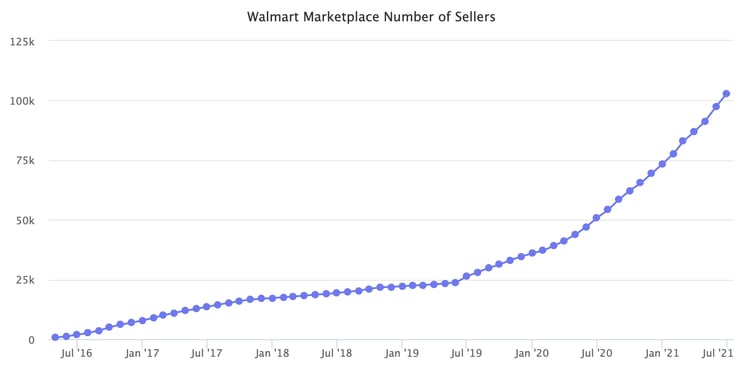
Unlike Amazon, Walmart has made it easy for customers to shop products online and pick them up in-store, or by the curbside, as previously mentioned. But above all of that, Walmart took a page out of Amazon’s success book to ensure:
- Fast and convenient delivery through the free-next day and two-day delivery options
- Free and easy returns (both in-store or online)
They’ve also improved the site to reflect a curated shopping experience, where shoppers can easily search and browse for products they need and want.
Walmart is a by-invitation-only marketplace; they specifically search for reputable brands and retailers that offer exceptional customer service, a wide product assortment, reliable fulfillment, and competitive pricing. This is a key differentiating factor because it means it’s not a saturated marketplace, which ultimately translates to less competition and more visibility. “We believe in growing in the right way, with the right number of sellers. And, because of that, our sellers get more impressions than they do on our competitors,” said a representative.
They have a simple pricing structure and don’t charge for setup or monthly fees. The only cost is a referral fee on each completed purchase, as you can see here.
In contrast, to list on Amazon, you don’t have to be invited. Anyone can do it. You simply pay a monthly fee of $39.99 and follow their listing rules. It is a great marketplace to list your products if you’re looking to tap into the international market as it has a huge global presence, increasing popularity, and wide reach.
How to sell on Walmart vs. Amazon
Walmart Marketplace
To request to sell on Walmart, you have to fill out an application form that will or will not be approved, depending on whether you meet their requirements. The whole process leading to you selling on Walmart takes 5 steps to complete.
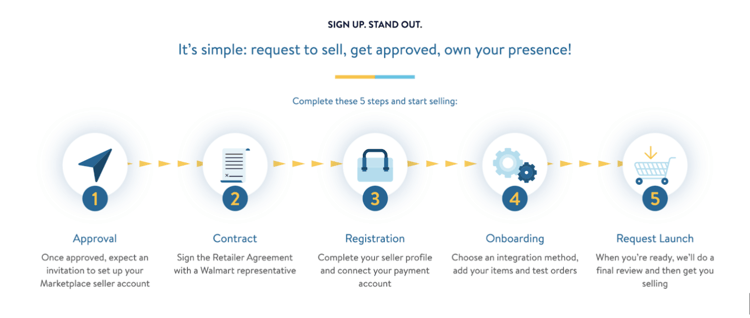
The application process takes about 10-15 minutes if you already have the required information. These requirements include:
- US Business Tax ID (SSN not accepted)
- W9 or W8 and EIN Verification Letter from the Department of Treasury that verifies your US business address or place of physical operations
- Planned integration method for your product catalog (bulk upload, API, solution provider)
- Primary product categories, catalog size and related information (e.g. total SKUs you will be selling on Walmart.com initially with verified UPC information and used vs. refurbished etc.)
- A catalog that doesn’t include any products listed under their Prohibited Products Policy
According to this, the approval process can take weeks, and once you’re approved, you have to sign the Walmart Marketplace Program Retailer Agreement. This details Walmart’s role and responsibilities, yours as a seller, the order and fulfillment process, return management, and of course, pricing details.
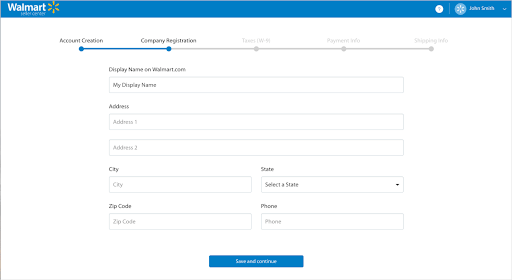
Once approved, you have to register a seller account, where you add your business details, tax, and payment information, and all the fun stuff.
From there, you’ll go through an onboarding process, where you can choose an integration method to upload your product catalogs. From there, you need to test orders and finally, Walmart will do a final review and then get you selling.
Amazon
There are two plans:
1) an Individual Plan, where you’ll pay $0.99 every time you sell an item, and 2) a Professional Plan that costs $39.99 per month. The price for your plan stays the same regardless of how many items you sell a product. For both plans, Amazon collects a referral fee per sale, which is a percentage of the total transaction.

Apart from the subscription fees, selling fees, Amazon also has shipping and Fulfillment By Amazon (FBA) fees to pay. If you fulfill orders yourself, Amazon charges you shipping rates based on the product category and shipping service selected by the shopper. If Amazon will be responsible for your fulfillment, there are fees for order fulfillment, storage, and optional services. We’ve written a comprehensive outlook on Amazon’s FBA model. From there, you can create a new seller account with your business email, which will take you to your Seller Central account. Before you sign up, make sure you’re ready with the following:
- Business email address or Amazon customer account
- Chargeable credit card
- Government ID (identity verification protects sellers and customers)
- Tax information
- Phone number
- A bank account where Amazon can send you proceeds from your sales
Once you have access to Seller Central, you must first create a product listing, adding large batches using bulk uploading or inventory management with third-party systems. You have the option to match an existing listing (if the same product already exists on Amazon) or create a new listing (if you are the first or only seller with that product). You’ll need to add all-important product data, everything from SKUs, product title, product description, digital assets such as images and videos, and other additional information that can help customers make a buying decision. From there, you need to add checkout information such as tax, payment options, and shipping options. Here’s Amazon’s comprehensive guide to ensure you make your listing journey easy and successful on the first try.
Both channels require product listing optimization
To rank higher and drive more sales on whichever of these platforms you choose, you have to ensure that you prioritize your product listing optimization.
That means ensuring that your product content includes the right keywords using a language customers use when they search for products, the right titles, rich product descriptions, high-resolution images and videos, and product reviews.
We cannot emphasize the need to create a product experience that stands out.
Rank higher on Walmart or Amazon with Plytix PIM
Without a product information management (PIM) system, managing your product database can be a nightmare. Entering product data manually, one by one is such a tedious undertaking. Now add optimization to the mix and you’re likely to break a sweat from frustration. We get it, and that’s why we built Plytix PIM.
Ours is a product content management tool that’s user-friendly and makes marketplace integration super easy. That means you can store, optimize, and enrich all of your product information in one place and distribute it to your chosen ecommerce marketplace in a matter of minutes. Of course, you can use the same tool to continue to manage content for your brick-and-mortar and webshop.
That sounds like a winning content strategy for ranking and putting your products in front of your old and new customers across all your sales channels. If you're interested to learn more, book a FREE demo with us and we'll guide you on how to expand to marketplaces and boost your multichannel commerce efforts.
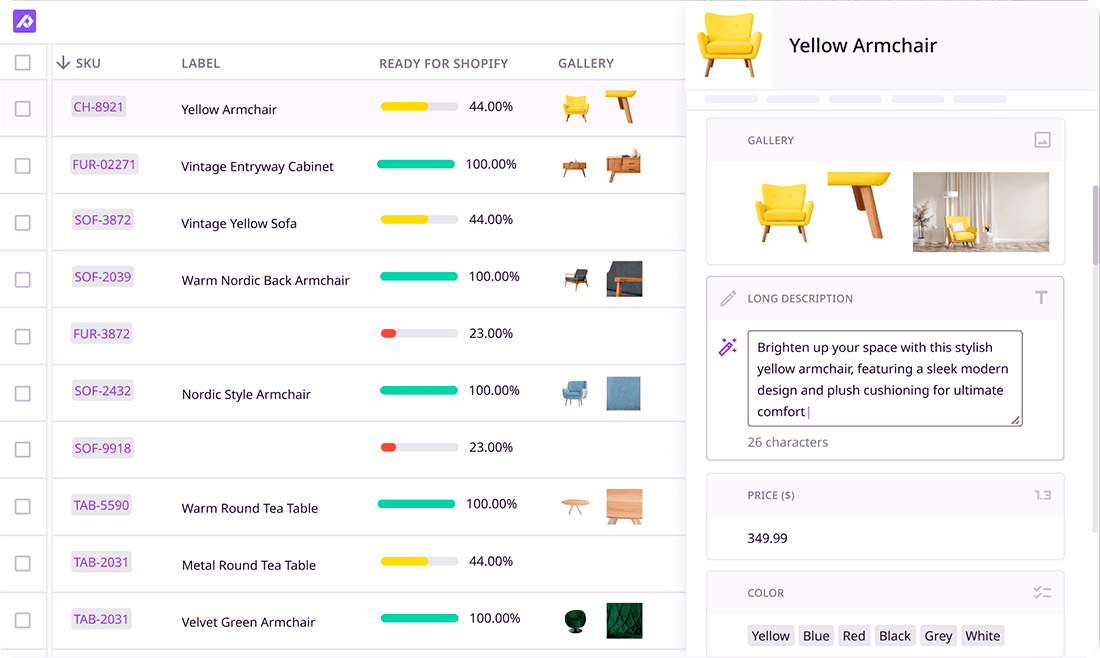
What if your product data actually worked for you?
We’ll show you how Plytix helps you stop fixing data—and start using it.
Related posts
Keep the good stuff coming
Subscribe to our blog newsletter and get monthly content that helps you manage product data smarter.
No spam. Just real value.
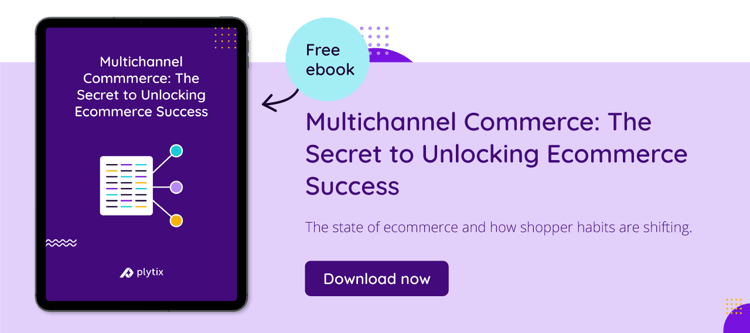

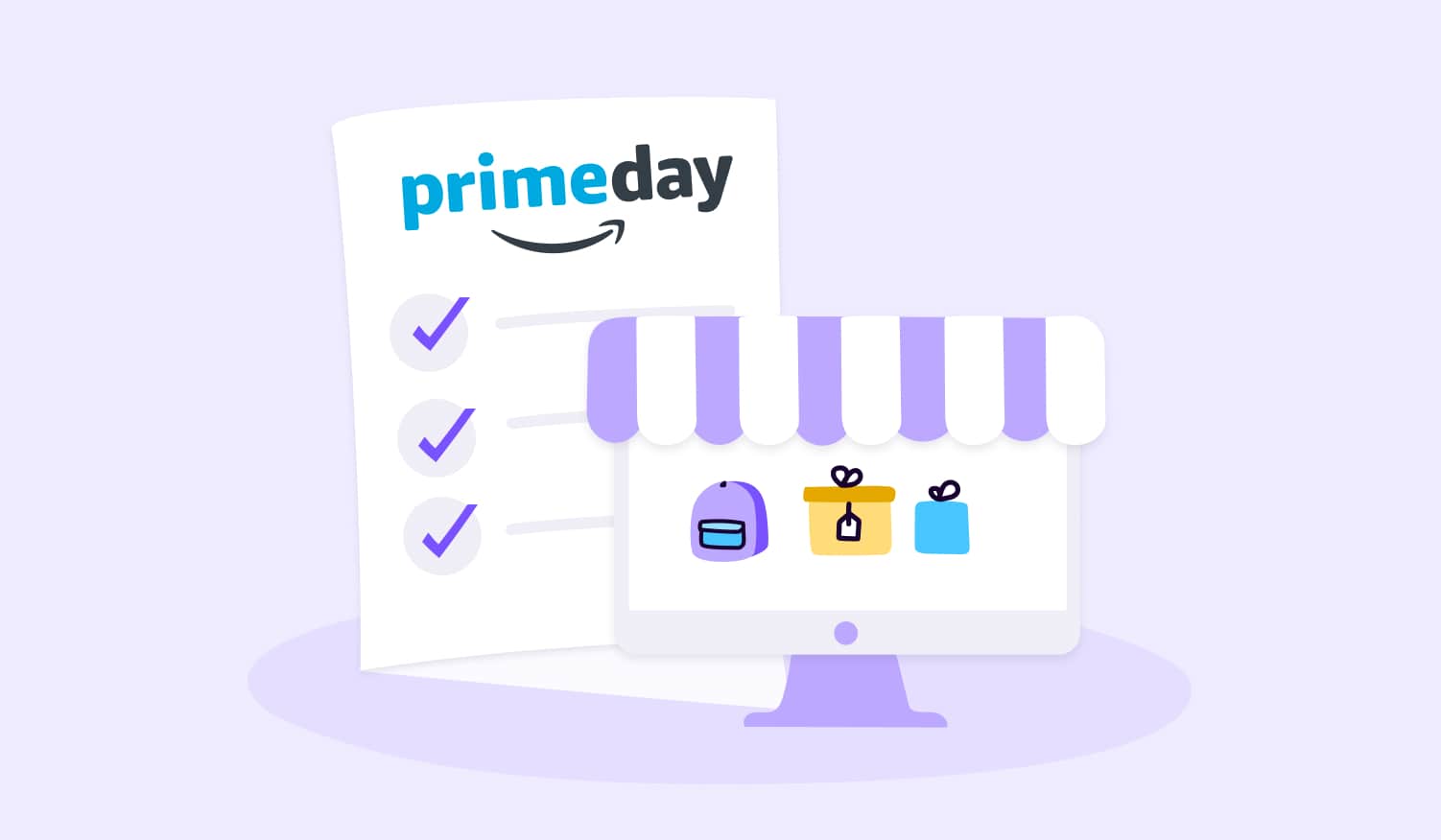

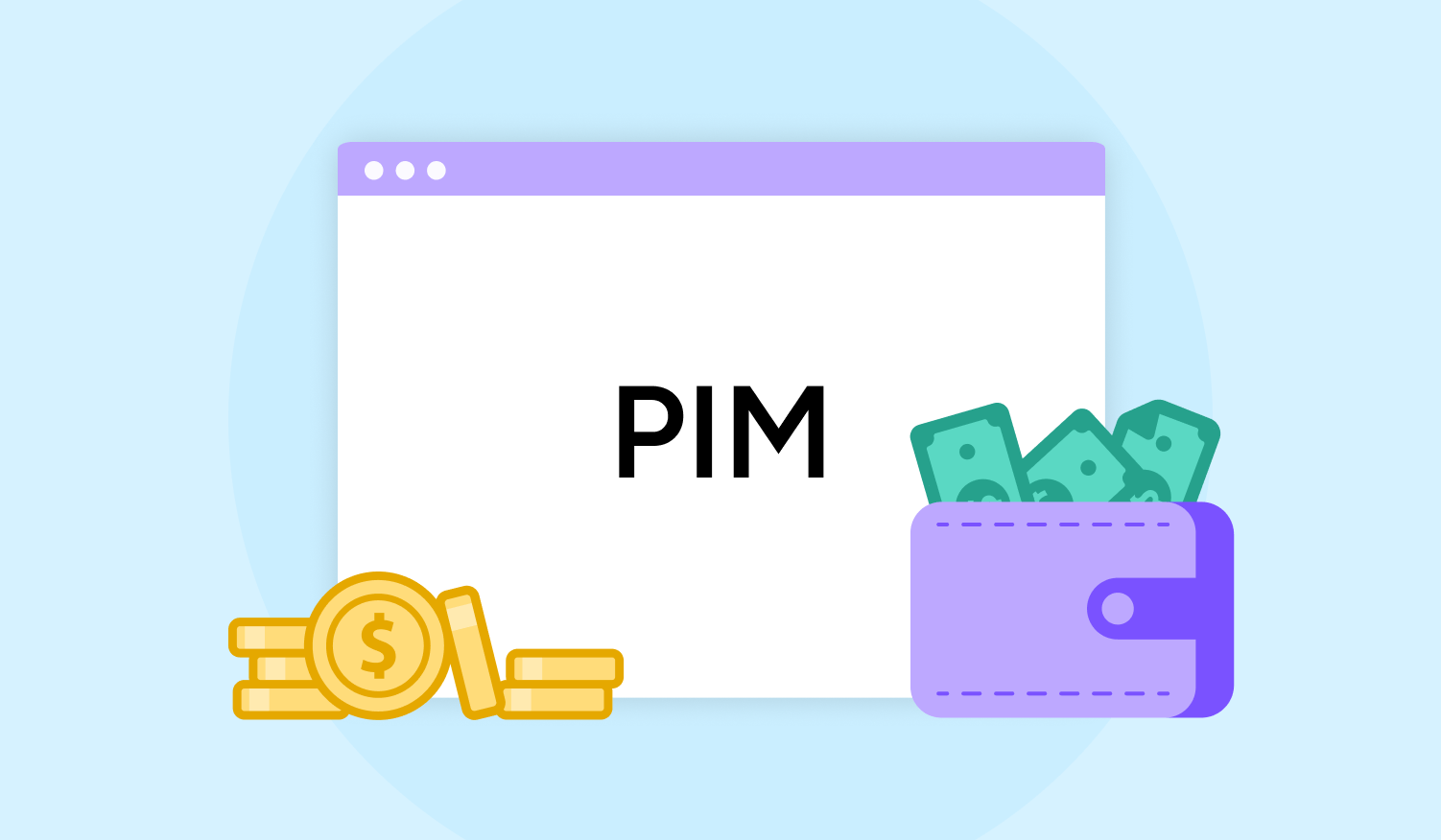

Think others should see this?
Go ahead and share it.